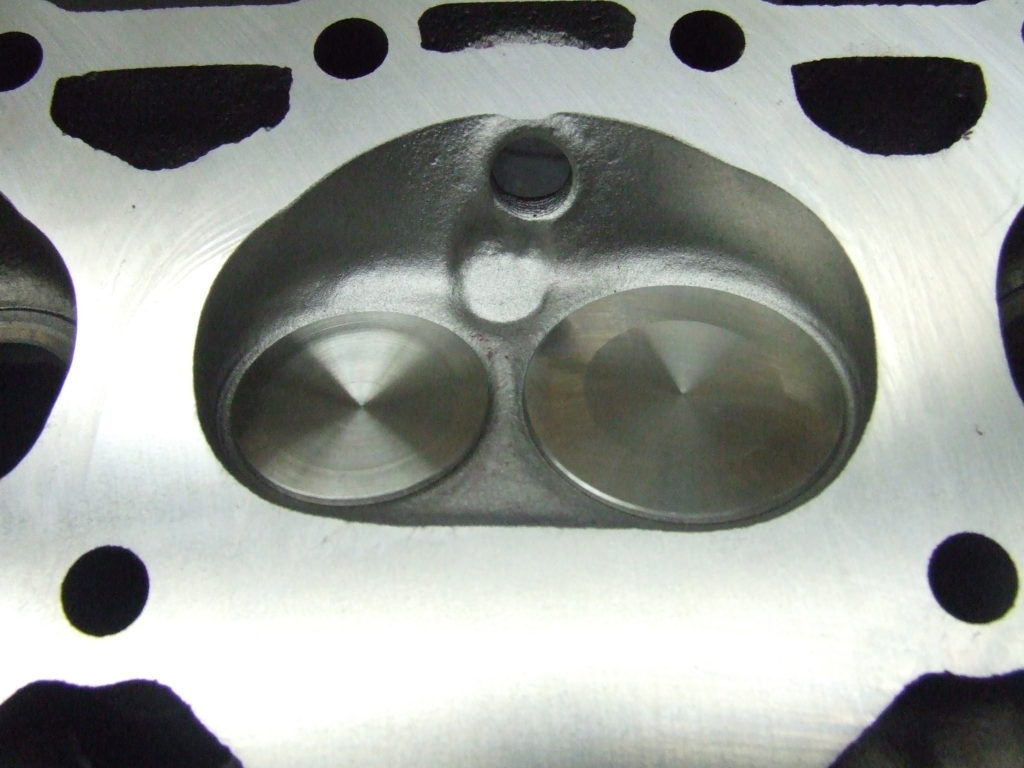Valve Size, Air Flow and Performance
Will installing larger valves improve the performance of the cylinder head?
Answer: It depends on the type of cylinder head. Generally, if the cylinder head was designed for street applications larger valves will not improve air flow. Often tines, large valves will actually decrease air flow.
Let’s take a look at the Chevy 305 heads as a good example:
The normal valve size in the “performance” 305 head is 1.84″ x 1.50″.
Thinking that “bigger is better” many people install 1.94″ intake valves in 305 heads.
Well, the fact is, a 1.94″ intake valve in a 305 head will hurt overall air flow of the head, especially under .400″ lift. Many tracks that require 305 heads have a valve lift rule.
Many years ago, I had a conversation with a person representing a company that sold complete Chevy 305 heads, mostly on the internet. They installed 1.94″ intake valves in all their 305 heads. I asked if they were aware that installing 1.94″ valves in a 305 head reduced air flow. His reply went something like this, “Well, yes, I do know the smaller valve actually works better. But, nobody will purchase a set of heads with 1.84″ valves; they all want 1.94″ so that is what we give them”. Amazing.
Why would you want to spend money to go slower? This is a classic case of bigger is not better. Often times, bigger is slower.

‘601 casting number 305 head w/1.84 x 1.50 valves
Air flow data;
Air flow with 1.84″ valve. Ferrea # F5060.
.200 126
.300 173
.400 206
.500 212
.600 213
After the head was flow tested with the 1.84″ valve, we machined the valve seat to accept a 1.900″ valve. If all you look at the high end flow numbers, you would think that the larger valve was a improvement. However, the small improvement at .500″ and .600″ lift was more than offset by a sizeable reduction below that point.
Air Flow with a 1.900″ valve Ferrea #F5072.
.200 124 -3
.300 170 -3
.400 198 -8
.500 214 +2
.600 215 +2
